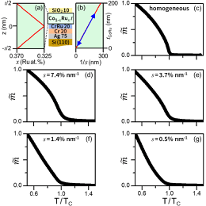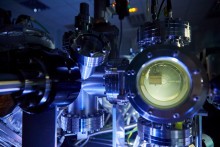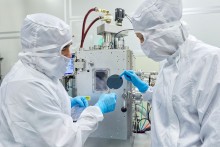Related news by tag Nanomagnetism
Viewpoint article in Physics about nanoGUNE publication
The article itself reports the existence of cumulative growth in hysteresis loops upon multiple field cycling for two different materials (Co/Pt and Co/Pd thin film multilayers), giving rise to an increase in hysteresis loss of up to 350%. Although changes in hysteresis loops have been described in the literature before, they were only very small compared with the large effect described in the article. This growth is explained in the article in terms of the successive accumulation of nucleation domains, a hypothesis that is confirmed through Kerr microscopy imaging.
The Viewpoint, written by Prof. Chris Leighton from the Department of Chemical Engineering and Materials Science of the University of Minnesota, stresses the important consequences of this work for analysis methods based on hysteresis loop measurements, and its pioneering and stimulating role for future research in this field.
The journal Physics highlights exceptional papers from all APS journals in order to help active researchers and the interested broader audience to stay informed about the most important developments in physics. Each week, an editorial committee chooses two papers that merit this treatment, aided by referee comments and internal discussions, and ask a leading international expert to prepare a Viewpoint article.
PRL: Tuning the Magneto-Optical Response of Nanosize Ferromagnetic Ni Disks Using the Phase of Localized Plasmons
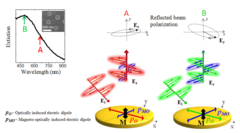
A team of researchers carried out experiments on nickel nanodisks deposited on glass displaying localized plasmons and developed a simple physical model that unveils the physics underlying the appearence of such extraordinary plasmonic-related MO activity. The reported findings revealed a so far concealed pathway to tune the magnetic induced optical response of such meta-materials beyond what is offered by the intrinsic material properties through the excitation of localized plasmons. These effects might be exploited to make biological and chemical sensors with improved sensitivity or light modulators in nanophotonics.
Dr. Berger, appointed Section Editor of Journal of Physics D: Applied Physics
Dr. Andreas Berger, nanoGUNE´s research director, has been appointed as the Section Editor for the Applied Magnetism and Applied Magnetic Materials section of Journal of Physics D: Applied Physics, one of the world-wide leading journals in applied physics research published by the Institute of Physics (IOP). Starting from January 1st, 2015, he will serve a 3 year term in this capacity.

Nature Communications: ultrasensitive magnetoplasmonic sensors
Few years ago a collaboration between the nanomagnetism and nanooptics groups in nanoGUNE demonstrated that ferromagnetic nanoantennas support localized plasmons, and, at the same time, show a sizeable magneto-optical activity under the application of external magnetic fields. The idea of bringing light and magnetism together at the nanoscale using plasmons led, in the past decade, to the rapidly developing field of magnetoplasmonics to realize novel and unexpected phenomena and functionalities for the manipulation of light and/or spin states at the nanoscale.
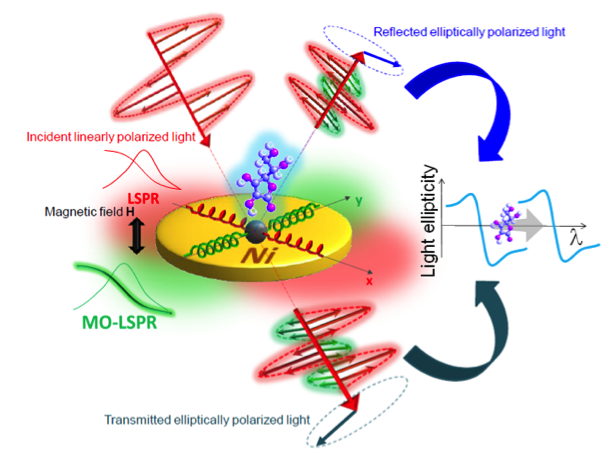
The discovery of these ultrasensitive capabilities is primarily directed towards biomedicine and diagnostics as an efficient way to retrieve more information from smaller amount of fluids, like blood or urine as well as to detect cancer serum or to study proteins dynamics upon surface functionalization. In addition to biosensing, there are also many other potential applications that do not require surface functionalization and would enormously benefit from this novel approach, like chemical sensing of toxic materials and explosives, or ultra-precise thickness-monitoring applications.
The experiments were carried out in nanoGUNE and are the results of a synergistic collaboration between the Nanomagnetism and Nanomaterials groups.
Figure:
Light polarization manipulation enabled by phase compensation in the electric response of a magneto-plasmonic nanoantenna controlled through precise design of the LPRS resonance induced by the magneto-optical activity (MO-LSPR) of the ferromagnetic constituent material (Ni) and exploitation of the effect for ultrasensitive molecular sensing.
Overriding Universality via nano-scale Materials Design
Phase transitions and critical behavior are among the most fascinating phenomena in nature and their exploration inspired the development of many branches of modern science. An excellent example is spontaneous symmetry breaking, which takes place at a critical temperature TC that divides two macroscopic phases distinguished by an order parameter, for which the ferromagnetic-to-paramagnetic phase transition is the most emblematic example.
CIC nanoGUNE expands its patent portfolio
The diversity of application fields demonstrates the great versatility of nanoscience research, and the increase in licensed methods and technologies demonstrates its ability to improve and add value to industrial processes and products. "Our goal is to continue doing research of excellence and transferring those specific developments with the potential to improve the competitiveness of companies to the economic sector," explained Ainara Garcia-Gallastegui, head of Technology Transfer at nanoGUNE.
nanoGUNE Scholarship: call for Master Thesis students
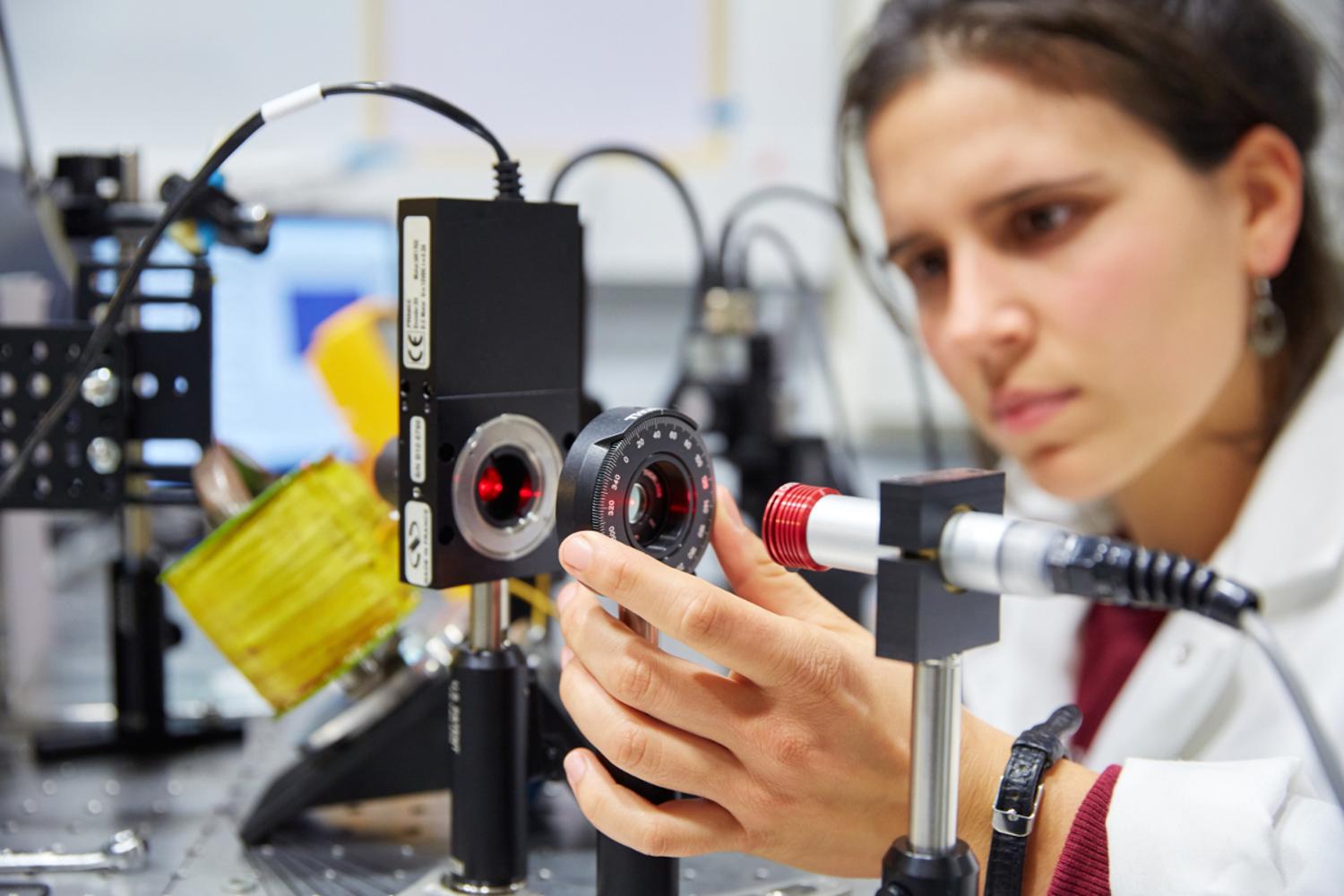
The Scholarships will be of a total amount of 3,000€. This amount is for the whole period and will not be compatible with any other grant or funding awarded for the same purpose. Candidates have to be pre-registered and accepted at the above mentioned Master degrees in order to be eligible for these grants. Interested candidates can find all the information about the offered master projects and the application process following this link.
Besides the grants, nanoGUNE offers Master students coming from any official Master degree the possibility to develop their Master Thesis within one of its research groups.
Registration period for the summer internship program open
CIC nanoGUNE has just launched the program for summer internships, which runs every year. University students are offered the chance to get involved in the activity of a world-class research center.
The Piero Brovetto Award 2015 goes to Nicolò Maccaferri
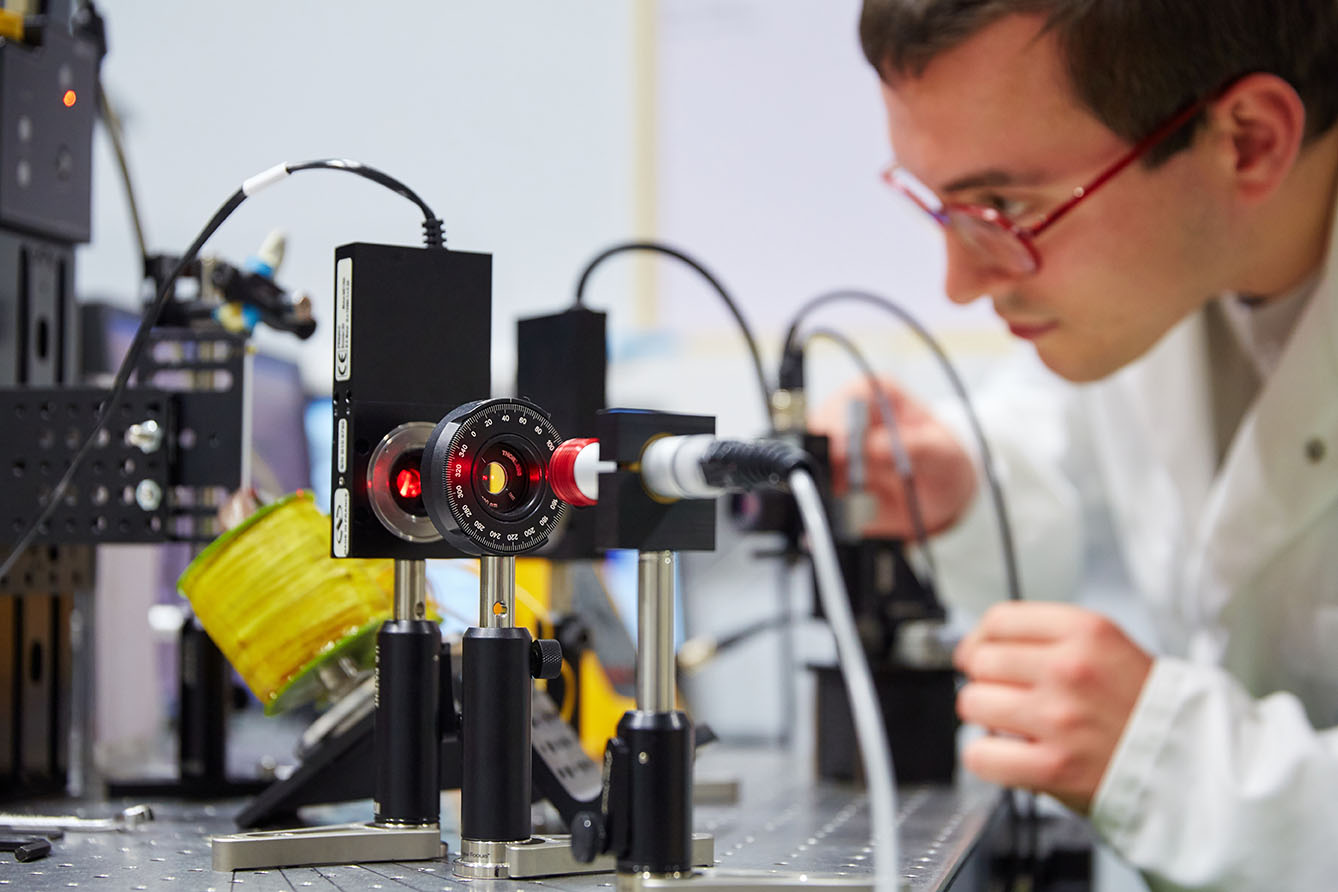
The prize is part of a series of awards given annually to young researchers who have distinguished themselves for their contribution in different topics, such as Condensed Matter Physics, Nuclear Physics or Theoretical Physics. According to Nicolò Maccaferri, "it is a real honor to be awarded with this prize, which recognizes my efforts in discovering novel effects in plasmonic magnetic nanostructures, such as the mechanism which governs such effects and how to apply these materials to real-life applications”.
“I’m really grateful to my family, which always supported me in my choices. I’m especially grateful to Paolo Vavassori primarily for accepting to be my supervisor, and also for his support and guide in pursuing the great research we do together every day at nanoGUNE. I would like to thank also all my colleagues and collaborators inside and outside nanoGUNE..Finally I thank also Andreas Berger and Txema Pitarke for giving me the possibility to work in nanoGUNE, and the Basque Government which is the funder of my Doctoral Grant”, concludes Maccaferri, who is now starting his last year of PhD in nanoGUNE, and looks forward to new challenges in the exciting research field at the border between magnetism and optics.
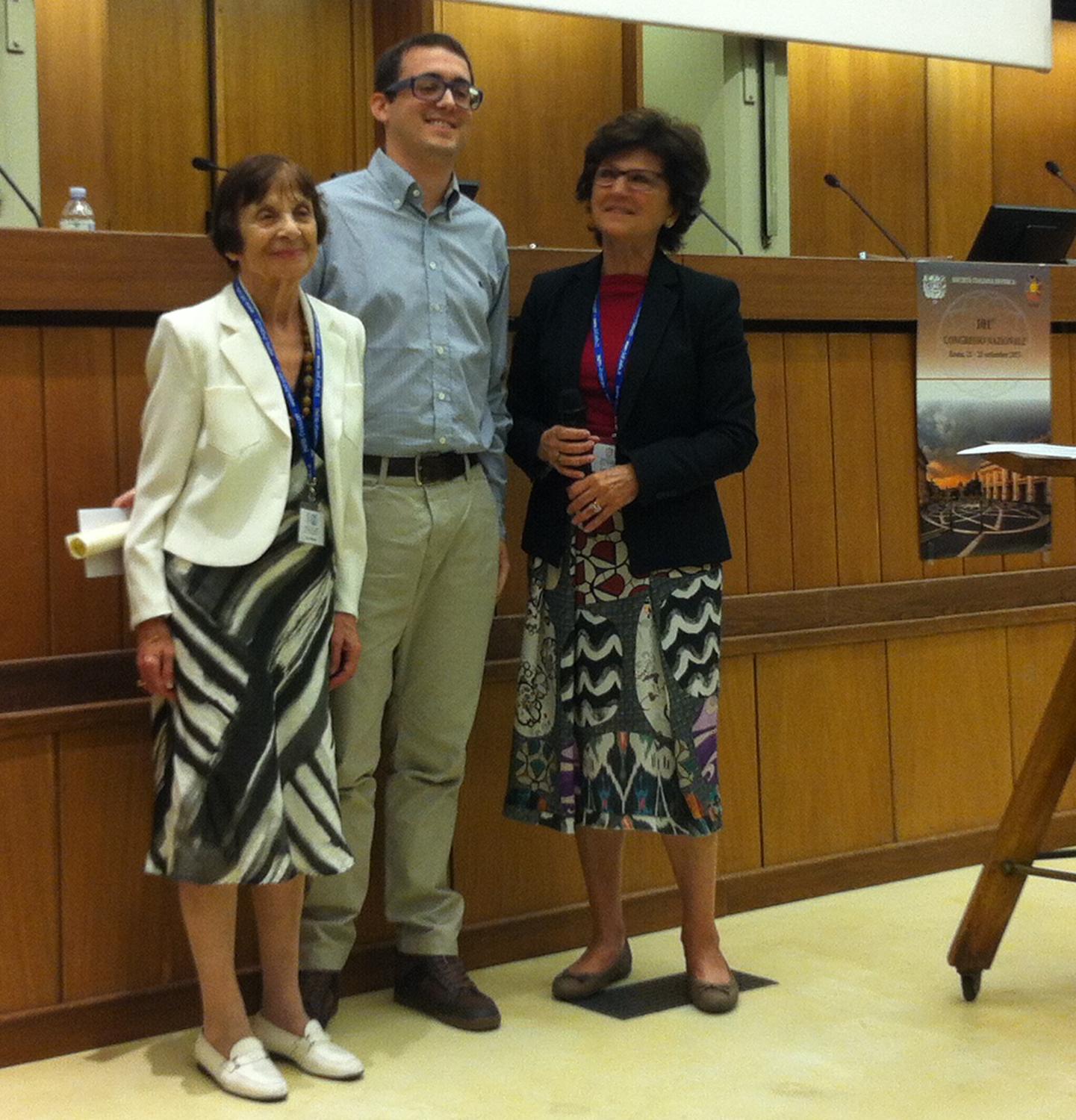
Piero Brovetto Award
The Award, which is yearly assigned to a young Italian researcher who has given important contributions to the Condensed Matter Physics research field, is dedicated to Prof. Piero Brovetto (1926-2013). The award is financed by the family of Prof. Brovetto and contains a prize money of 1.500 euros. The prize is awarded every year during the opening ceremony of SIF (Italian Society of Physics) National Congress. The selection of the winners is made by the Council of SIF or by proper award committees.
Prof. Piero Brovetto (1926-2013), born in Torino in 1926, took the Degree in Chemistry in 1951 and in Physics in 1952 from the University of Torino. In the early stage of his career, as Researcher at the Italian Institute of Nuclear Physics (INFN) of Torino, he focused his research on the Oberhauser effect, the cosmic rays and the parity violation. He obtained also funding by the Italian Research Council (CNR) and FIAT to build one of the first nuclear accelerator in Italy. He then continued his studies on different topics, in particular molecular spectroscopy. In 1962 he got the position of Full Professor at the University of Cagliari, where his research was more focused on the Condensed Matter Physics, in particular on the luminescence phenomena and superconductivity. During his career he contributed to the development of some techniques, such as the derivative spectroscopy and the spectral-resolved thermo-luminescence.
Mikel Quintana receives the Extraordinary Doctorate Award 2024
Mikel Quintana has completed his thesis between 2019 and 2023, which has been led by Dr. Andreas Berger and carried out in the Nanomagnetism group of CIC nanoGUNE and the Ph.D. Program in Nanostructure Physics and Advanced Materials of the UPV/EHU.
Summer Internship Program: call open until 5 February

NanoGUNE has just opened the registration period for the Summer Internship Program.
This year, we offer up to 13 projects for university students in the 3rd and 4th year of Physics, Chemistry, Biology, Engineering, and Mathematics. They will have the chance to get a closer look at the activity taking place at a cutting-edge research center for between six weeks and two months during the summer. This experience enables university students to collaborate with nanoGUNE researchers on their research projects in a whole range of fields, such as nanomagnetism, self-assembly, nanobiomechanics, nanodevices, nanomaterials, nanoimaging, and nanoengineering.
All the information about these projects, timetables, pay, etc. can be checked out at: https://www.nanogune.eu/summer-internship
Anyone interested in participated in the selection process needs to send an email attaching his/her academic record and CV to the address provided on the webpage no later than 5 February 2017. The students selected will be asked to attend an interview on 17 or 24 February.
Students from UPV / EHU, Tecnun, UAB and the UB carry out summer internships at CIC nanoGUNE
On Tuesday, 19 June, we welcomed a group of internship students that will carry out a research project at NanoGUNE during the summer. The director of the center, Jose M. Pitarke, received the students with a presentation talk about nanoGUNE, that was also attended by the researchers that will conduct the students’ projects.
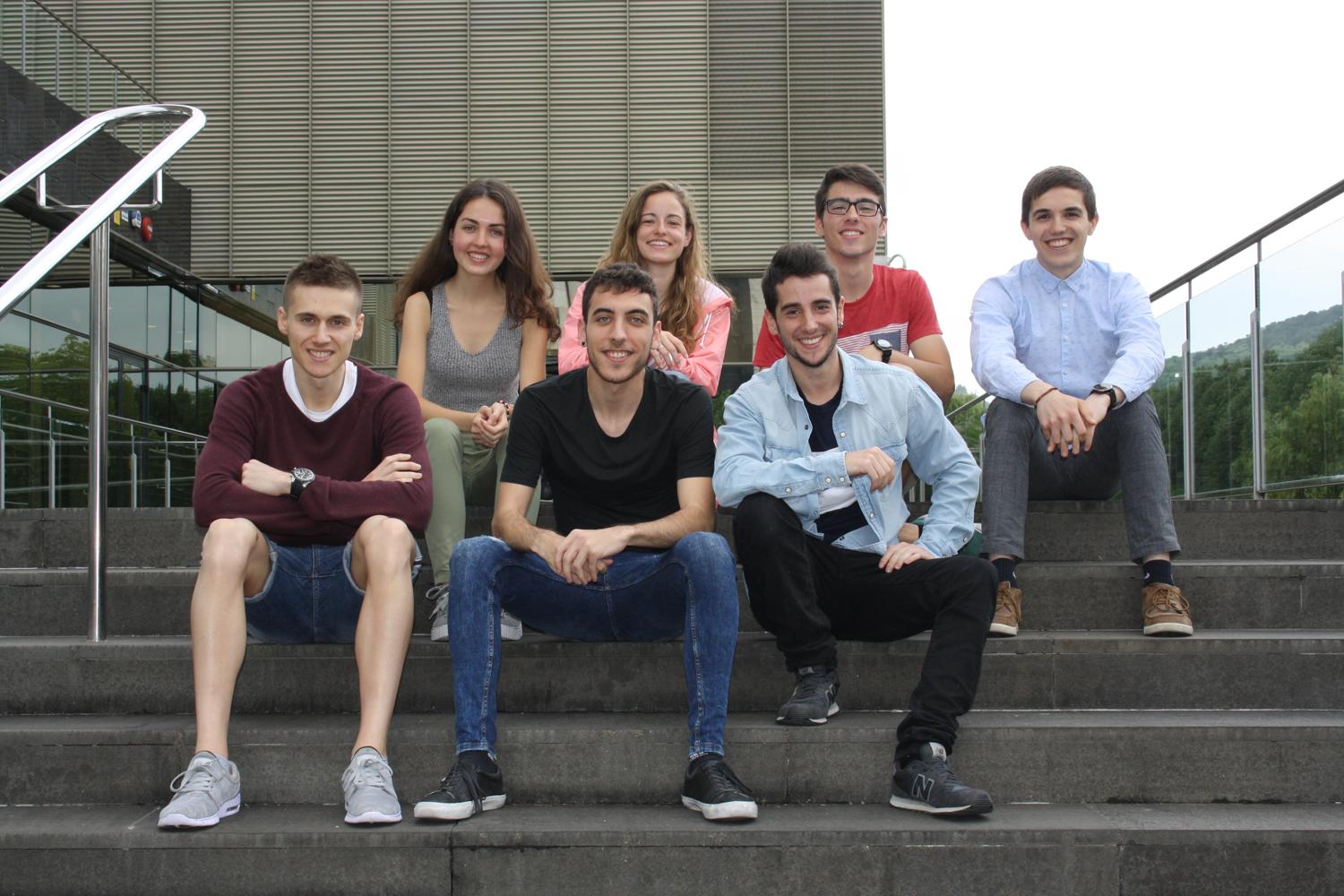
The 11 students come from different universities, among which are, Unibersity of the Basque Country (UPV /EHU), Tecnun, Univeristy of Barcelona (UB), Autonomous University of Barcelona (UAB). This program offers to the students a real experience of work in a research laboratory in order to make it easier for them to take decision about their future professional life.
The students will collaborate and learn with the different research groups at nanoGUNE, such as nanooptics, nanodevices or nanomagnetism. They will carry out a research project for two months following the instructions of a researcher of their group.
Some of them started the internships at the beginning of the month and they have been very involved in the group’s work. "The truth is that we started very suddenly; the very first day they took me to the laboratory," says Amaia Ochandorena, a student of Biochemistry and Molecular Biology at the UPV/EHU.
All the students knew CIC nanoGUNE and stressed that "it is an important research center" and "offers and works with topics of much interest".
For these students, and also for undergraduate students of general, nanoGUNE offers the possibility of collaborating with the center for the completion of final graduate or master thesis projects, for which also opens a call for grants every year.
nanoGUNE launches a new summer internship call for university students
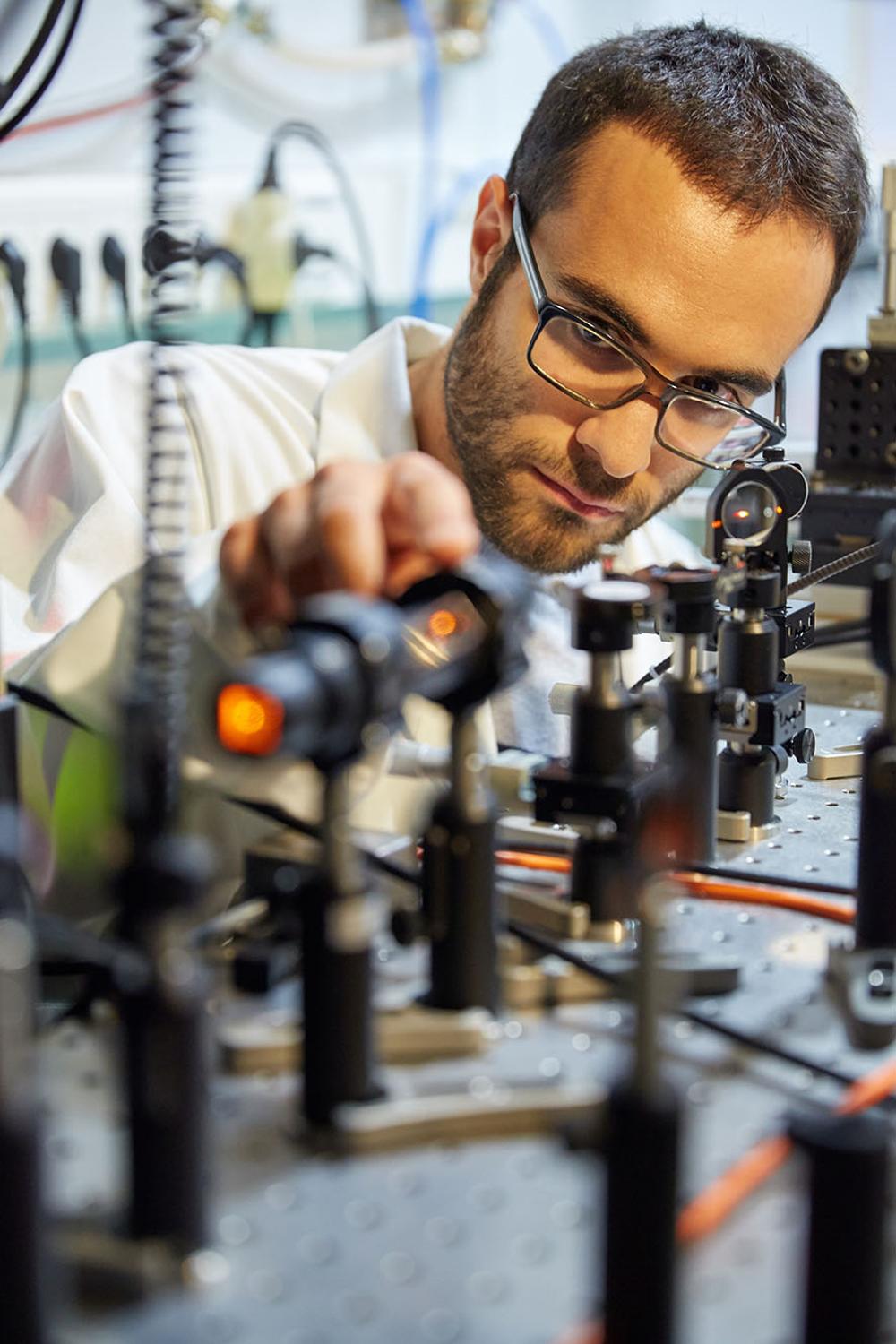
Through this programme the Basque nanoscience research centre will this summer be receiving about ten new students in their 3rd and 4th years of Physics, Chemistry, Biology and Engineering. For a period of six weeks or two months the young students will be collaborating with nanoGUNE researchers in their research projects on subjects such as electron/spin phenomena and magnetism, nanoscale optics, nanoscale materials and nanobioengineering, among others.
To participate in the summer internship programme any students who are interested will need to submit their applications online via the nanoGUNE website, the deadline being 16 February. Full information relating to the call is available via the nanoGUNE website (www.nanogune.eu)

